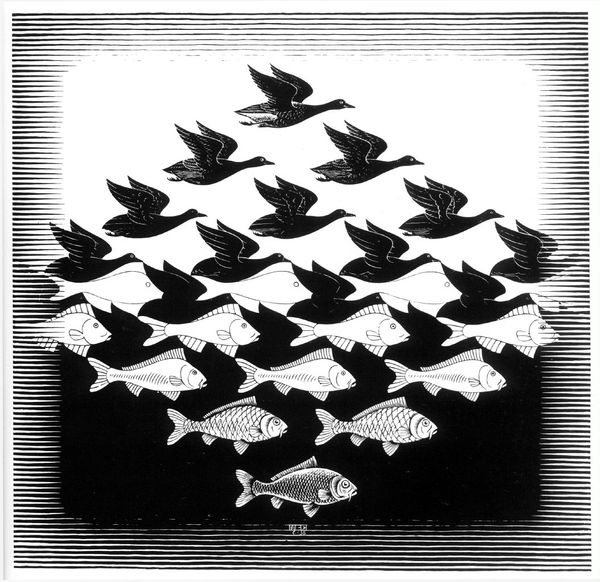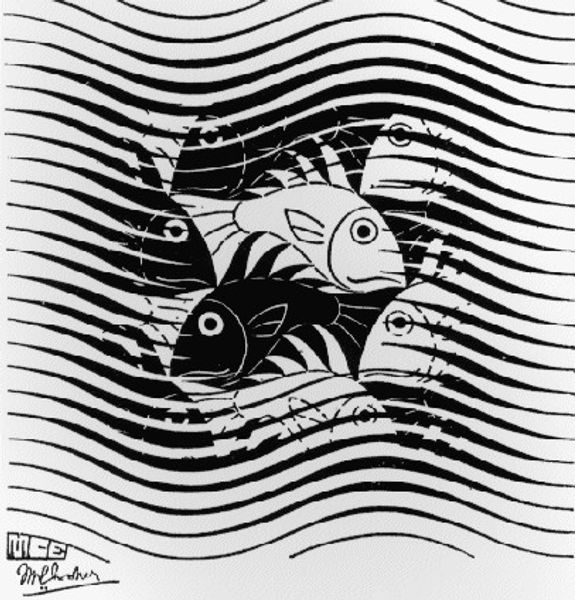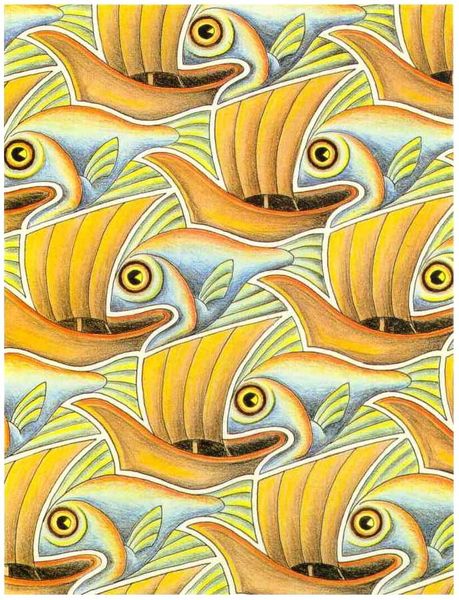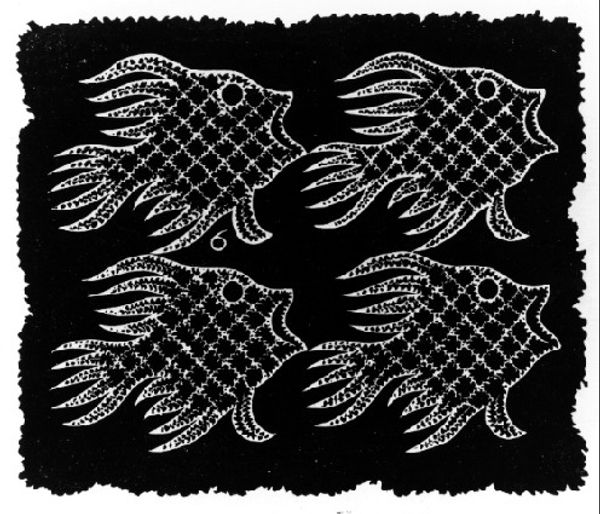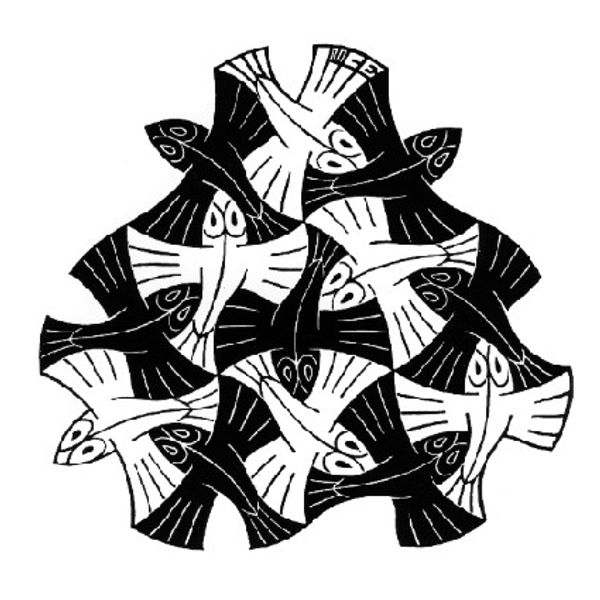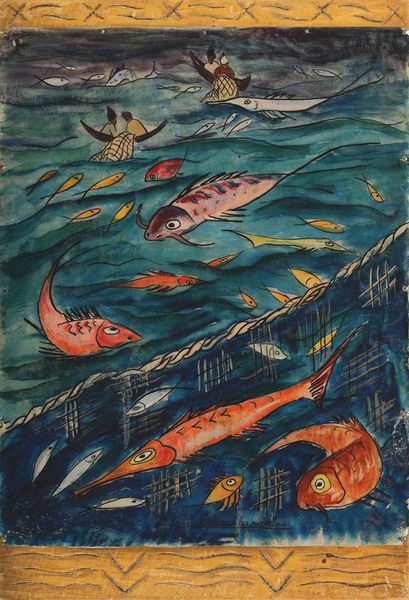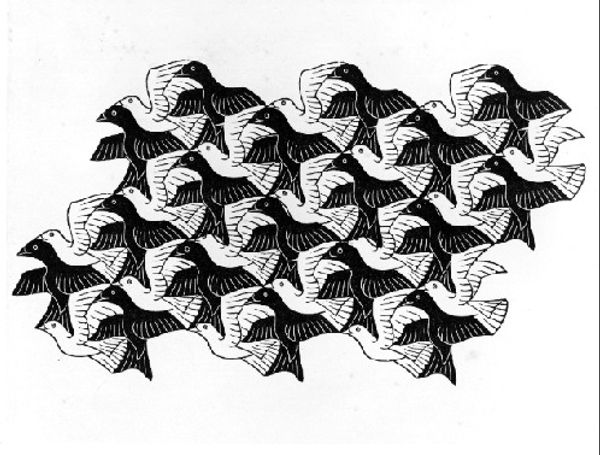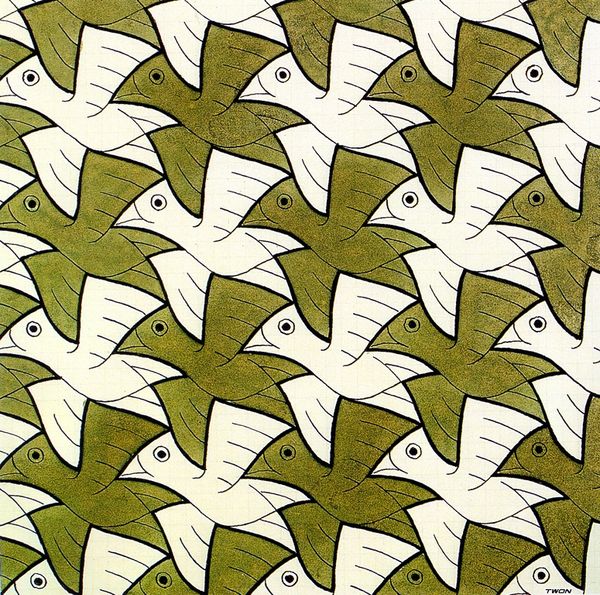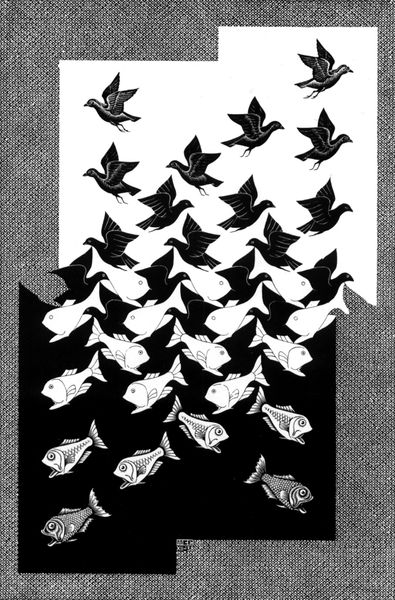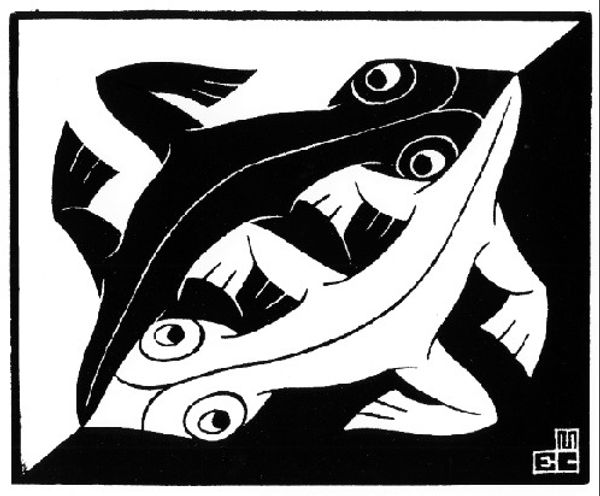
graphic-art, print
#
graphic-art
#
fish
#
animal
# print
#
pattern
#
leaf
#
abstract pattern
#
organic pattern
#
geometric
#
plant
#
pattern repetition
#
surrealism
Copyright: M.C. Escher,Fair Use
Curator: Looking at this print by M.C. Escher from 1939, "Metamorphosis II excerpt 4," my first thought is, wow, my brain kind of wants to rebel! It's this intricate, shifting dance between shapes, rendered in graphic black and white. What’s your take on it? Editor: The most immediate impression is how restless it makes me feel, in a good way! I feel that controlled transformation—like an alchemical experiment where one form melts almost imperceptibly into another. It feels simultaneously soothing, because of the patterns, but also like reality is constantly just out of grasp! Curator: Escher was a master of tessellations and mathematical concepts. This excerpt beautifully showcases how motifs like dragonflies morph into fish, then into birds—a constant, flowing exchange. It’s so meticulously crafted, each figure perfectly interlocking with its neighbors. It speaks to the endless cycle of life and the interconnectedness of nature. How does that cyclical feeling resonate with you? Editor: It brings to mind the Ouroboros, the snake eating its tail. Here it isn't about destruction, but more about a constant process of reinvention, like a visual echo of ancient philosophical concepts about time and existence. I am also thinking, if I had to visualize evolution, it might look a lot like this artwork! It also feels as though he took some ideas about negative space from the Bauhaus era, and injected into it his unique symbolism and playful take on spatial ambiguity. Curator: I see what you mean with the reference to the Bauhaus movement and modern ideas about patterns. This reminds me about ancient symbols—especially how animals, like those that Escher chose to represent, often became culturally loaded as they moved throughout different regions of the world. It really speaks to the rich, sometimes surprising journey that ideas, visual forms, and beliefs have taken through human history. Editor: Yes! Escher seemed like he knew just how loaded these symbols would become once assembled—like setting free very deliberate images into the wild and waiting to see what sort of cultural collisions might ensue. I almost wish I could meet him at a cocktail party. Curator: Yes, exactly, an ideal dinner guest! This dive into Escher's mind has given me some renewed fascination for patterns and transformations. I'll definitely look differently at repeating forms and cycles now. Editor: Absolutely! It also gave me a deep appreciation for how an artist's clever visual trickery can provoke contemplation and philosophical considerations about growth, repetition, and reality. I suppose it is proof that metamorphosis isn't just something occurring on the artwork—it is happening within us as viewers, too!
Comments
No comments
Be the first to comment and join the conversation on the ultimate creative platform.
